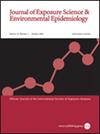噪音导致心血管疾病:是时候采取行动了。
IF 4.7
3区 医学
Q2 ENVIRONMENTAL SCIENCES
Journal of Exposure Science and Environmental Epidemiology
Pub Date : 2024-12-10
DOI:10.1038/s41370-024-00732-4
引用次数: 0
摘要
背景:慢性交通噪音是影响相当一部分人口的环境压力源。世界卫生组织(WHO)和各种研究已经确定了交通噪音与心血管疾病(CVD)之间的联系,如心肌梗死、中风、心力衰竭和心律失常。世卫组织环境噪音指南和最近的审查证实,随着交通噪音水平的提高,心血管事件的风险增加。目的:对交通噪音对心血管不良影响的流行病学研究和翻译研究的证据进行述评。方法:我们描述了最近的一项Umbrella+综述的结果,该综述将2018年世卫组织环境噪声指南中使用的证据与最近(2015年后)对原始研究的高质量系统综述相结合。基于文献检索的质量、偏倚风险评估和使用AMSTAR 2的荟萃分析方法,纳入高质量的系统评价。结果:流行病学研究表明,多年暴露在高水平的道路交通噪音中会导致许多不良健康后果,包括过早死亡、缺血性心脏病(IHD)、慢性睡眠障碍和烦恼增加。从机制上讲,噪音暴露会引发氧化应激、炎症、内皮功能障碍和昼夜节律紊乱。这些过程包括NADPH氧化酶的激活、线粒体功能障碍和一氧化氮合酶解偶联,导致血管和心脏损伤。研究表明,长期接触噪音不会导致习惯化,而易感个体,如那些已经患有心血管疾病的人,尤其容易受到噪音的影响。本文章由计算机程序翻译,如有差异,请以英文原文为准。

Noise causes cardiovascular disease: it’s time to act
Chronic transportation noise is an environmental stressor affecting a substantial portion of the population. The World Health Organization (WHO) and various studies have established associations between transportation noise and cardiovascular disease (CVD), such as myocardial infarction, stroke, heart failure, and arrhythmia. The WHO Environmental Noise Guidelines and recent reviews confirm a heightened risk of cardiovascular incidents with increasing transportation noise levels. We present a narrative review of the evidence from epidemiologic studies and translation studies on the adverse cardiovascular effects of transportation noise. We describe the results of a recent Umbrella+ review that combines the evidence used in the 2018 WHO Environmental Noise Guidelines with more recent (post-2015) high-quality systematic reviews of original studies. High-quality systematic reviews were included based on the quality of literature search, risk of bias assessment, and meta-analysis methodology using AMSTAR 2. Epidemiologic studies show that exposure to high levels of road traffic noise for several years lead to numerous adverse health outcomes, including premature deaths, ischemic heart disease (IHD), chronic sleep disturbances, and increased annoyance. Mechanistically, noise exposure triggers oxidative stress, inflammation, endothelial dysfunction, and circadian rhythm disruptions. These processes involve the activation of NADPH oxidase, mitochondrial dysfunction, and nitric oxide synthase uncoupling, leading to vascular and cardiac damage. Studies indicate that chronic noise exposure does not result in habituation, and susceptible individuals, such as those with pre-existing CVD, are particularly vulnerable.
求助全文
通过发布文献求助,成功后即可免费获取论文全文。
去求助
来源期刊
CiteScore
8.90
自引率
6.70%
发文量
93
审稿时长
3 months
期刊介绍:
Journal of Exposure Science and Environmental Epidemiology (JESEE) aims to be the premier and authoritative source of information on advances in exposure science for professionals in a wide range of environmental and public health disciplines.
JESEE publishes original peer-reviewed research presenting significant advances in exposure science and exposure analysis, including development and application of the latest technologies for measuring exposures, and innovative computational approaches for translating novel data streams to characterize and predict exposures. The types of papers published in the research section of JESEE are original research articles, translation studies, and correspondence. Reported results should further understanding of the relationship between environmental exposure and human health, describe evaluated novel exposure science tools, or demonstrate potential of exposure science to enable decisions and actions that promote and protect human health.

 求助内容:
求助内容: 应助结果提醒方式:
应助结果提醒方式:


